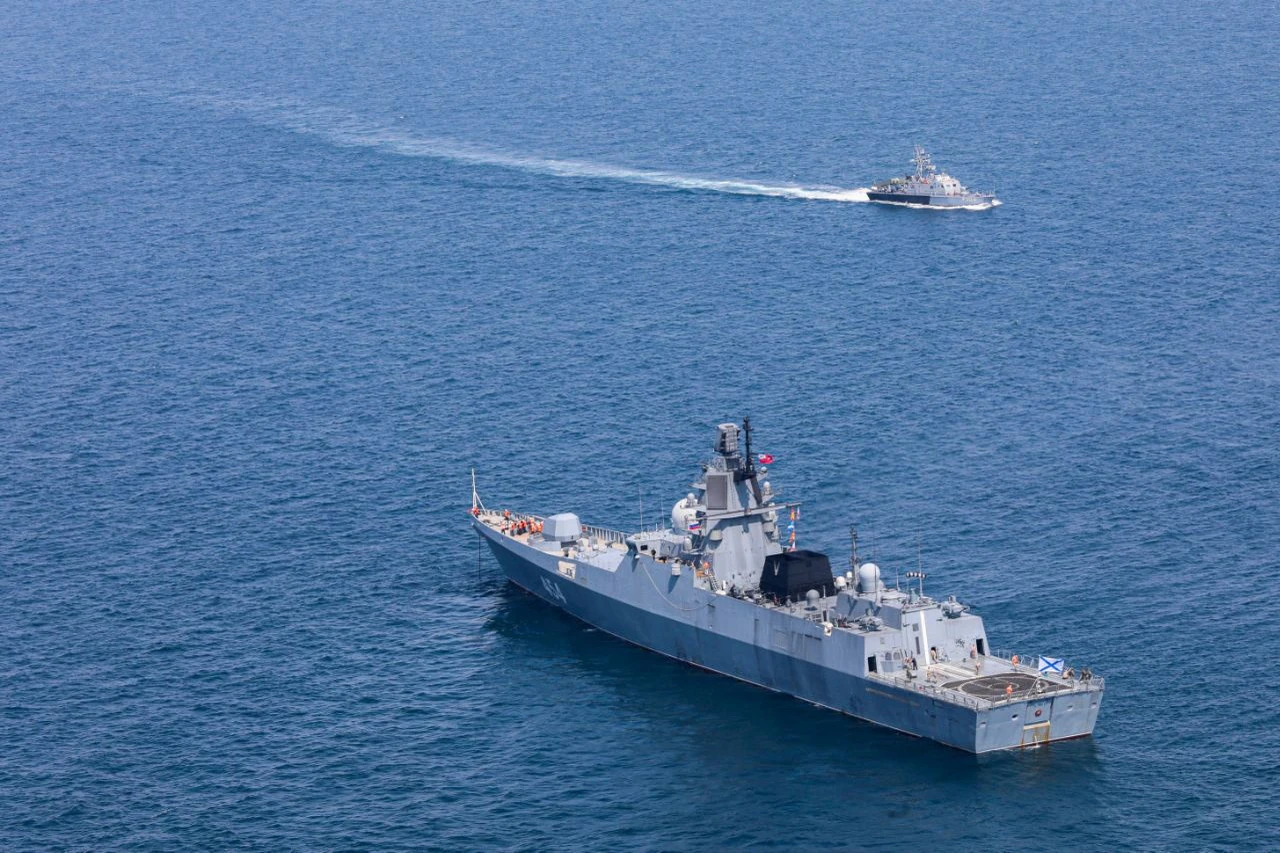China, Russia launch naval drills amid rising tensions with NATO
 A Russian warship is seen during a joint naval military drill between Iran, Russia, and China in the Gulf of Oman, Iran, in this picture obtained on March 15, 2023. (Reuters Photo)
A Russian warship is seen during a joint naval military drill between Iran, Russia, and China in the Gulf of Oman, Iran, in this picture obtained on March 15, 2023. (Reuters Photo)
China and Russia have begun joint naval exercises off China’s southern coast, the Chinese defense ministry announced Friday. The drills, dubbed Joint Sea-2024, come amid heightened tensions between the two nations and NATO allies.
The exercises, which started in early July and will continue through mid-month, are taking place in waters and airspace near Zhanjiang, Guangdong province. According to Chinese officials, the drills aim to demonstrate the two countries’ resolve and capabilities in addressing maritime security threats and maintaining global and regional stability.
This military cooperation occurs as NATO leaders recently convened in Washington to reaffirm support for Ukraine in its ongoing conflict with Russia. The Western alliance’s summit concluded with a declaration stating that China had become a “decisive enabler” of Moscow’s invasion of Ukraine.
In response, Beijing strongly condemned NATO’s stance, with a foreign ministry spokesman describing the alliance’s remarks as “irresponsible and provocative.” The spokesperson accused NATO of harboring a Cold War mentality and ideological bias.
The timing of the Sino-Russian naval drills has raised concerns among some regional powers. Japan expressed “grave concern” over joint China-Russia activities near its territory, citing national security implications.
China maintains that it is not directly involved in the Ukraine conflict. However, Western leaders have criticized Beijing for providing political and economic support to Moscow, including the trade of dual-use goods with both civilian and military applications.
The exercises are part of an annual military engagement plan between China and Russia, underscoring what Chinese officials describe as a “comprehensive strategic partnership of coordination for the new era.”
As these naval drills unfold, Chinese forces are also conducting separate exercises with Belarus, a Russian ally, along NATO’s eastern border. These concurrent military activities highlight the complex geopolitical landscape and shifting alliances in the region.
The ongoing naval exercises and diplomatic tensions underscore the growing strategic alignment between China and Russia, as well as the increasing challenges faced by NATO and its allies in navigating the evolving global security environment.



